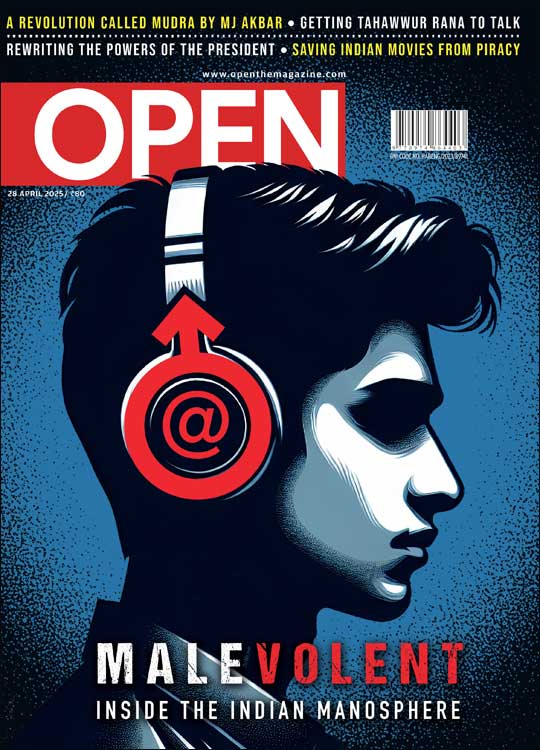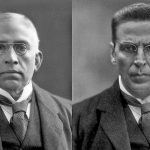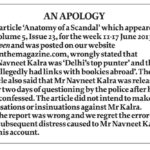The 1962 jailing of Chinese Indians
Recent revelations of India’s official attitude towards people of Chinese origin within its borders after the Indo-China war are simply too shocking to ignore.
 Jaideep Mazumdar
Jaideep Mazumdar
 Jaideep Mazumdar
|
21 Nov, 2010
Jaideep Mazumdar
|
21 Nov, 2010
/wp-content/uploads/2015/11/assam4.jpg)
Recent revelations of India’s official attitude towards people of Chinese origin within its borders after the Indo-China war are simply too shocking to ignore.
Recent revelations of India’s official attitude towards people of Chinese origin within its borders after the Indo-China war are simply too shocking to ignore.
TINSUKIA, MAKUM & SHILLONG
If America’s rounding up of its Japanese immigrants after Pearl Harbour has been a matter of shame for that country, India’s own treatment meted out to innocent Indians of Chinese origin in vengeance for 1962 is arguably much worse—for the very fact that most of us know virtually nothing about this unpardonable episode, let alone hear voices of atonement.
That India was militarily humiliated by China in the 1962 war is a matter of record. With luck, its sordid aftermath will also join the conversation and begin to exercise the Indian conscience, now that renowned Assamese author Rita Chowdhury has exposed the episode in a book, Makam, that chills readers to their bone marrow.
Chowdhury’s book, named after a town in Assam and published in April this year, is a fictionalised account, but is based on a true story and offers enough leads to contact the people whose lives were blighted by the Indian State simply for being who they were.
In November-December 1962, thousands of Indians of Chinese origin were arrested and sent to a prison camp at Deoli in Rajasthan, where they were kept in terrible conditions for three to five years. That’s not all—many were forcibly deported to China. Those who were allowed to return found their homes and business establishments auctioned off, looted or occupied forcibly.
Shattered and depressed, they started rebuilding their lives, and while some have managed to spring back, many others languish in poverty and neglect. But what unites them all, from Kolkata in West Bengal to Tinsukia in Upper Assam, Shillong in Meghalaya, to other places across the country, is their fear—palpable in how they recount their horrific experiences to ‘outsiders’, unsure if they have said too much for their own good, unclear what point speaking up serves, and uncertain what the Indian State has in store for them.
Their last brush against the State left them scarred. It was not just a gross violation of their human rights, it was not just a blatant violation of the Geneva Convention on non-combatants that New Delhi signed in 1949, it was an evisceration of India as a humane country.
WHEN THE SHIPS CAME IN
According to records at the National Library in Kolkata, the first Chinese settler in latter-day India was Yong Atchew, who arrived in Calcutta in 1780. British rule in Bengal had begun a couple of decades or so earlier. Atchew started a sugar mill, and the 100 odd compatriots he brought in as workers went on to form India’s first Chinese settlement. Attracted by business opportunities, many others followed Atchew down the decades. From the 1830s onwards, the British started getting people from China to work on Assam’s tea plantations. Many others were refugees from poverty, famine, hunger and floods in China, and fresh off the boat they made themselves useful as carpenters, shoemakers, mechanics, traders and the like. By the late 19th century, these people of Chinese origin had established a formidable reputation in eastern India as craftsmen and traders. Several tea garden workers picked up some of these skills, moved to urban areas, and did well with businesses of their own. In Assam, Chinese masons and carpenters were much sought after till even a few decades ago. In Calcutta, Darjeeling, Kalimpong and Shillong, Chinese shoemakers and dentists were acknowledged to be the best in their fields. Many also set up Chinese restaurants and beauty parlours that became very popular. The success of Calcutta’s tanneries and leather units can be traced almost entirely to Chinese effort. “The Chinese were famed for their hard work, enterprise and amazing tenacity, and that made them successful businessmen,” says Rita Chowdhury, who researched the Chinese diaspora in India for her book.
While the passage from China to India continued during the late 19th and early 20th centuries, a large wave of Chinese arrived around the time of World War II, when Mao’s revolution had thousands fleeing that country. They settled down first in Calcutta, before moving to North Bengal and the Northeast, and some other parts of India as well, where they set up various businesses, including vehicle repair units that became a byword for service excellence. For all this grit and hard work, their reward has been a tragedy scarcely told.
Today, there are barely a few thousand people of Chinese origin left in India. After 1962, their State-sponsored persecution has seen them flee to Taiwan, Hong Kong, Canada, Australia, Sweden, Austria, the UK and US. This is unlikely to reverse course anytime soon. Says Paul Chung, president of the Indian Chinese Association, “We feel marginalised, like second-class citizens, and think we can never become part of the mainstream.” The odd diasporic offspring like Meiyang Chang may become a sensation on Indian Idol, soulfully singing Hindi film tracks, even star in a Bollywood flick, but that’s just one Chang among many yearning for change. Harassed and humiliated in India, most feel unwelcome.
NIGHT TRAIN TO DEOLI
It was a backlash that grew uglier by the day. The moment that People’s Liberation Army (PLA) soldiers pushed their way across the MacMohan line in the Northeast sector into Indian territory, it was clear which side was at the losing end of the hostilities. Indian troops, poorly equipped and feebly commanded, stood little chance; they were massacred, more or less.
In the heat of nationalist fury, vengeance came to be wreaked upon people assumed to be in sympathy with the aggressors. Under the draconian Defence of India Act 1962, an estimated 10,000 people of Chinese origin were rounded up from Kolkata, Darjeeling, Kalimpong, Jamshedpur, Mumbai and the Northeast. They were all accused of being spies, even though such charges were never proven against anyone at all. It was a time of paranoia—and incidentally, Jyoti Basu and some other Indian communist leaders were also jailed under the same draconian law that year.
“Policemen came knocking on our door one late November morning and said we’d have to go with them for just three days for our own safety. They didn’t allow us to take anything, not even an extra pair of clothes,” remembers Wang Shing Tung, 61, who now runs Honk Kong Restaurant in Tinsukia. His grandfather and father, who had landed in Calcutta in 1939, ran a trading post there before moving base to Tinsukia a decade later to set up a sawmill. The Lee Hing Sawmill boomed, supplying railway sleepers and so on, and the family at their peak of prosperity owned six elephants, 14 trucks and several smaller vehicles.
Shu was bundled off along with his Chinese-origin wife and five children, and also his elder brother’s family of eight, in a truck headed for a jail in Nagaon district, from where they were put on a train to Deoli in Rajasthan.
Ho Kok Meng, 72, is still reluctant to talk about those days. “My grandfather came to Tinsukia from Calcutta in early 1900 and worked as a mechanic on tea gardens. My father Ho Hin set up this motor repair garage. I had just completed matriculation in December 1962 when police and CID officers came to our house and said we were to accompany them to (neighbouring) Dibrugarh for a few days,” he says, after some coaxing by Open. Ho Kok Meng, his father, younger sister Akhen, elder sister Akhoy and her husband, were all shunted onto a night train to Deoli.
In 1937, Sun Fu Thian’s father Achoy Sun had travelled from Santong province in China via Myanmar to arrive in Shillong. He set up a Chinese eatery that did very well. Sun Fu Thian became a dentist and set up his practice in Shillong. “I was 24 then. The police arrived at our doorstep that November 1962 morning and took all of us to the district jail. I knew the deputy commissioner and requested him to release my parents and siblings and keep me in custody. He agreed. I was in Shillong jail for five days and was then taken to Guwahati and put on a train to Deoli,” he recounts.
In the late 19th century, Liang Miao Lin’s grandparents had migrated from Kwangtung in China to Calcutta, where they started a tannery and opened a shoe shop. His dad, Liang Fong Seng, learnt the trade and then migrated to Shillong in 1958 to set up a similar outlet. In 1962, The Liang family—Fong, his wife and six children—were picked up and taken to Shillong jail, before being packed off to Deoli. Their house and shoe shop were sealed, as were the houses and businesses of about a thousand others of Chinese origin who were picked up for alleged espionage in Shillong.
NO SMOKING DOWN THE TRACK
“We were put on a passenger train with 15 coaches, and it took us over a week to reach Rajasthan. We used to halt at small stations twice a day, and our guards used to cook khichdi for us. It was half cooked and we could barely eat it. A few died during this journey,” sighs Sun Fu Thian.
The prison camp was spread over a 1 sq km area in the middle of a desert, adjoining the small town of Deoli. “It was encircled by a two-layer barbed wire fence with watch towers at regular intervals. There was just one gate,” recalls Ho Kok Meng. “The food was horrible the first week. The prison authorities used to cook, and it was either half cooked or rotten. We staged protests, and from the second week, they started giving us dry rations and firewood and we started cooking our own food,” adds Paul Leong, now the owner of a successful eatery in Shillong. He was six when he, along with his parents and four siblings, were taken to Deoli, but his memories of the ordeal are as vivid as ever.
Sun Fu Thian used to teach the children. Mail and newspapers were censored. There wasn’t much interaction between the inmates and prison authorities, though the latter did soften slightly to their plight over time. “Initially, they were strict and never used to allow us out. But as the months passed, they allowed us (children) to step out at times and wander around,” says Wang Shing Tung. “The prison authorities took us on excursions twice to Jaipur, Udaipur and some other places. They screened Hindi movies for us a few times. But generally, there wasn’t much to do,” says Paul Leong.
There were five wings—all barrack-like concrete structures—that housed over 7,000 inmates. The blocks were partitioned into smaller units, each with three rooms and a common courtyard, where the inmates used to rear poultry. They were not given clothes nor any bedding by their jailers. “The Red Cross stepped in and gave us clothes, biscuits, milk powder, soap and other essentials,” says Sun Fu Thian. Apart from daily dry rations, their jailers used to hand out monthly coupons of Rs 10 and Rs 1.50 to every adult and child, respectively, to buy essentials from a canteen. It just wasn’t enough to get by.
The hot desert took its toll. Many died of heat stroke and related illnesses. “What we suffered from most was the heat. We were not used to that sort of climate. There were frequent sandstorms during the summers. We used to put gunnysacks on the doors and windows and splash water on them to keep the indoors cool,” says Liang Miao Lin.
“There was this small girl who suffered a heat stroke and lost consciousness. She was declared dead by a paramedic, and was being buried when we discovered she still alive… but by the time we retrieved her, she was dead,” says Wang Shing Tung, his voice dropping to a whisper.
SHALL BE RELEASED
In mid-1964, the prison authorities announced that all the inmates would be deported to China. The actual deportations, though, were arbitrary and many families were broken up. Ho Kok Meng’s elder sister Akhoy and her husband were deported and nothing was heard of them since. “There were many such cases, even of parents being deported and the children being left behind. Even today many don’t know where their kith and kin are,” says Meng. The inmates were taken to Calcutta in small batches and put on ships to China, where they were sent to collective farms. The forced deportations stopped after a few months, and the prison authorities offered the option of migration to China to those who remained. Some, like Wang Shing Tung’s paternal uncle and his family, took the offer. But the rest preferred to stay back.
“It was then announced that we wouldn’t be allowed to return to the Northeast and would have to settle down in other parts of India. This caused us despair, since we had left everything behind,” says Paul Leong. The 2,500 odd who remained were desperate to return to their homes, and decided to wait. “My dad said ‘let’s wait’. Ultimately, in 1965, it was announced that we could return to our homes. They started releasing us in small batches,” says Wang Shing Tung. The last batch to leave Deoli was in mid-1967.
Further shocks awaited them. Relieved to return, the Deoli internees found they had little left of their own. “Many had their properties auctioned off and were offered ridiculously petty sums as compensation. But most returned to see their houses, shops, workshops, factories looted or taken over by locals. “We didn’t get back the keys of our house and had to sleep in the verandah for a month. When we could finally enter our house, we saw it was totally empty. Most of the machinery at our sawmill had been looted. We were told four of our six elephants had run away, and all our trucks and vehicles had been stolen. We were ruined,” recounts Wang Shing Tung. Ho Kok Meng says that not even a hammer was left in the motor repair garage they had left behind, and all furniture, clothes and utensils in their house had gone missing. It was the same story in every family.
Determined to battle the odds, they decided to begin again from scratch. “My mother started making momos and I used to run with a head load of those to different schools to sell them during lunch breaks and after school. I did this for two years, and then my dad opened a shoe shop with the money saved,” says Paul Leong. Wang Shing Tung’s father retrieved a jeep he had and ran it as a taxi, driving it himself. “He did this for eight years and we later opened this restaurant. He sent my elder sister to take a beautician’s course in Calcutta, and she came back to set up a beauty parlour,” says Wang. Ho Kok Meng’s father started his motor repairing garage afresh, Sun Fu Thian set up his dentist’s chamber again, and Laing Miao Lin’s father got help from another Chinese family to get back into the shoemaking business.
But the sufferings didn’t end there; more humiliation and harassment was in store for them. Restrictions were imposed on their movements, and the local authorities found them easy targets for extortion. “Till the mid 1990s, we had to obtain permits from the police to travel to any place. I had to renew my permit to go to the school (in Howrah district), where I used to teach every three months. We had to obtain special permits to travel anywhere outside Calcutta,” says Paul Chung. “We had to get permission to move anywhere beyond a seven kilometre radius of our home. This went on till 1974,” according to Sun Fu Thian. It was only after mid-1980 that they were relieved of a directive to report to designated police stations once a month.
MORE THAN A MATTER OF DIGNITY
For decades on end, they led lives devoid of human dignity. Yet, these Indians of Chinese origin refuse to let bitterness condition their outlook. “We lost a lot, but we have re-established ourselves. Yes, many fear a repeat of 1962, and so some have migrated to other countries,” says Chung, “But we hope that we’ll be recognised as Indians with all rights and privileges guaranteed under the Constitution.”
If India is to redeem itself, that hope needs to be saved from turning forlorn. For a start, the Government must acknowledge the injustice that was perpetrated nearly five decades ago. An apology is in order. And a solemn guarantee that nobody should ever have to face such an ordeal for being who he/she is.

/wp-content/uploads/2025/04/Cover-Manosphere.jpg)











More Columns
The Pontiff Who Led by Example Sudeep Paul
Find the Best App for Personal Loans Open Avenues
Truth or Lies? Nandini Nair